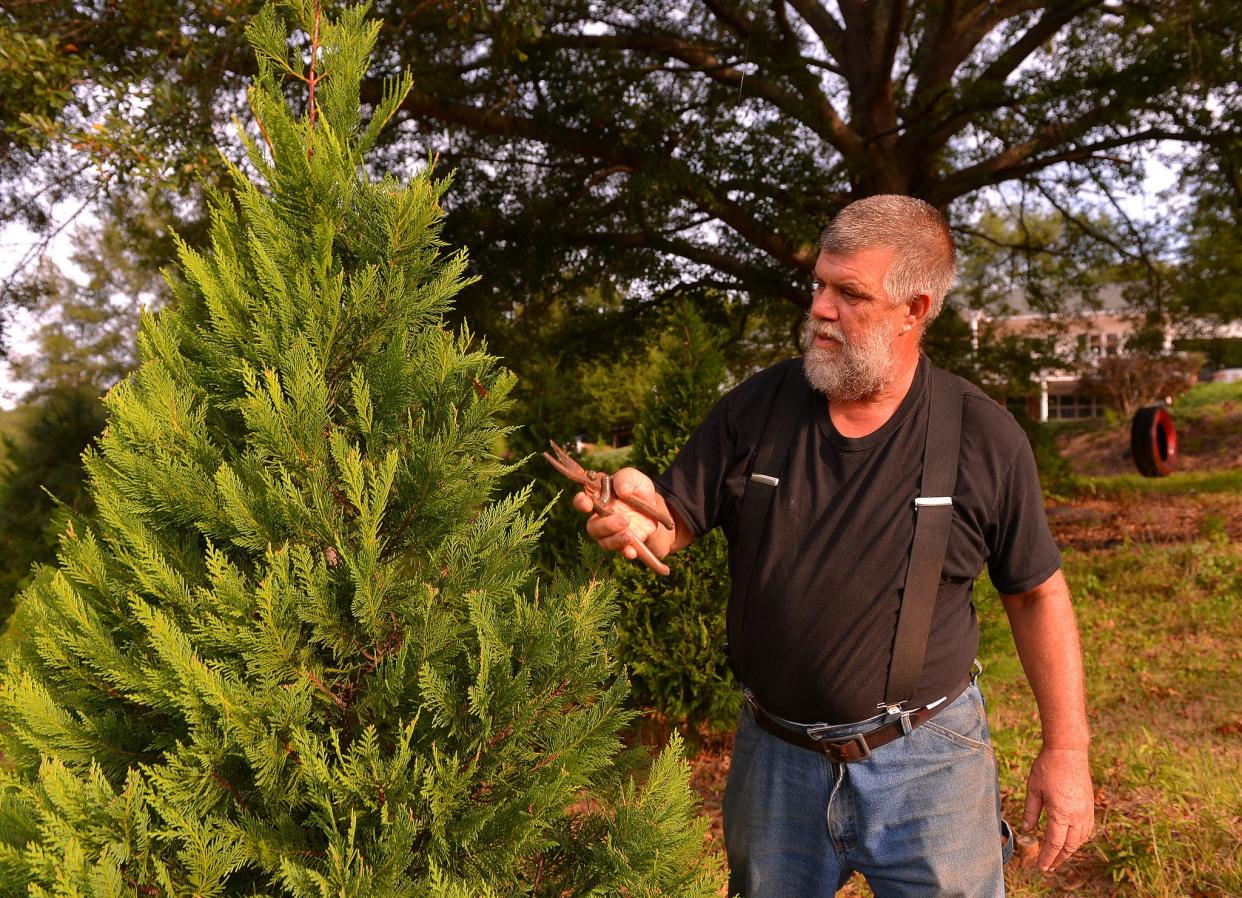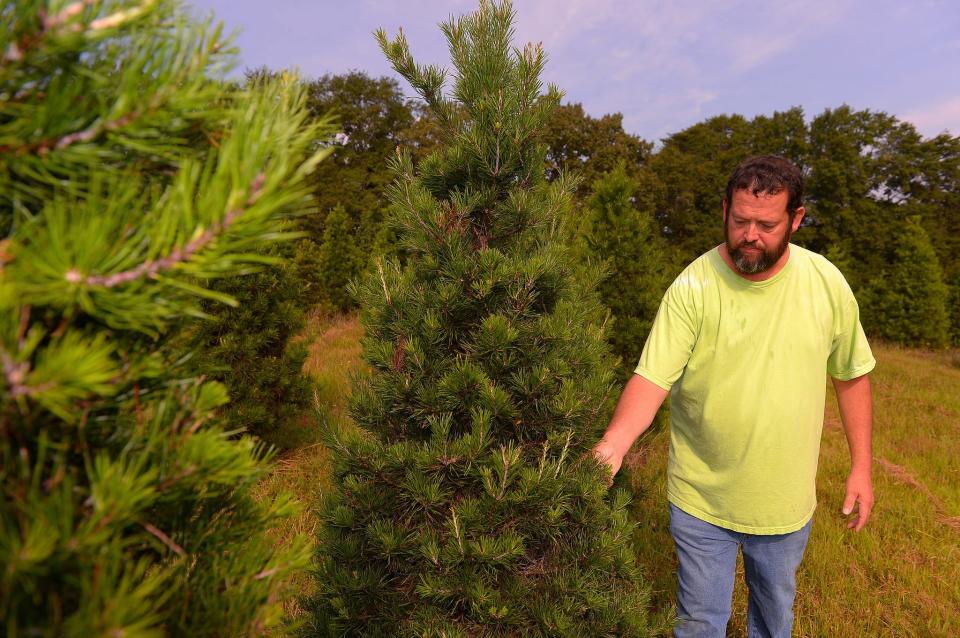Advice from Spartanburg County Christmas tree farmers: How to select, care for your tree

When asked for tips to care for a farm-grown Christmas tree, two local second-generation Christmas tree farmers immediately said similar things.
“Keep it watered. Do not let it run out of water,” said Cooley Springs Tree Farm owner Matthew Shields. “They will drink so much water that first week after you cut it. You’ll water it in the evening and check it the next evening and it may have drunk every bit.”
Christmas Hill Tree Farm’s Scott Wagner agrees. “If you’re not going to decorate it right away, put it in water,” he said. “Before you start decorating, even if you buy it here and you take it home, you got an hour and a half before decorating, put a little fresh cut on the bottom and never let it run out of water. They’ve got all sorts of different preservatives and I’ve heard of using aspirin or Coke and stuff like that (to keep it hydrated). I tell people all the time, I’ve never heard a tree complain of a headache.”
While plenty of water is the main key that Shields and Wagner shared, there are additional things you can do to care for your farm-grown Christmas tree.

According to the National Christmas Tree Association, a few other tips are:
►Use a stand that fits your tree. Avoid whittling the sides of the trunk down to fit a stand. The outer layers of wood are the most efficient in taking up water and should not be removed.
► Drilling a hole in the base of the trunk does NOT improve water uptake.
► Keep trees away from major sources of heat (fireplaces, heaters, heat vents, direct sunlight). Lowering the room temperature will slow the drying process, resulting in less water consumption each day.
► Always turn off the tree lights when leaving the house or when going to bed.
What type of tree do you need?
Here are the descriptions of Christmas tree types that are found in Spartanburg County and also of the Fraser fir most commonly found in North Carolina.
WHITE PINE: The largest pine in the U.S., the white pine has soft, flexible needles and is bluish-green in color. Needles are 2.5 to five inches long. White pines have good needle retention, but have little aroma. They aren’t recommended for heavy ornaments.
LEYLAND CYPRESS: The most popular Christmas tree in the Southeast, the Leyland cypress is dark green-gray in color and has very little aroma. Because it is not in the pine or fir family, it does not produce pollen, so those with an allergy to pollen can still enjoy a Leyland as their Christmas tree.
VIRGINIA PINE: These branches are stout and woody and respond well to trimming. The tree is small to medium in size and its foliage becomes extremely dense. Aside from being a good nesting site for woodpeckers, the Virginia pine continues to be one of the more popular Christmas trees in the South.
FRASER FIR: Fraser fir branches turn slightly upward and are dark blue-green in color. They have good form and needle retention. They have a pleasant scent and excellent shipping characteristics.
SOURCE: NATIONAL CHRISTMAS TREE ASSOCIATION
This article originally appeared on Herald-Journal: Spartanburg Christmas tree farmers: How to select, care for your tree

